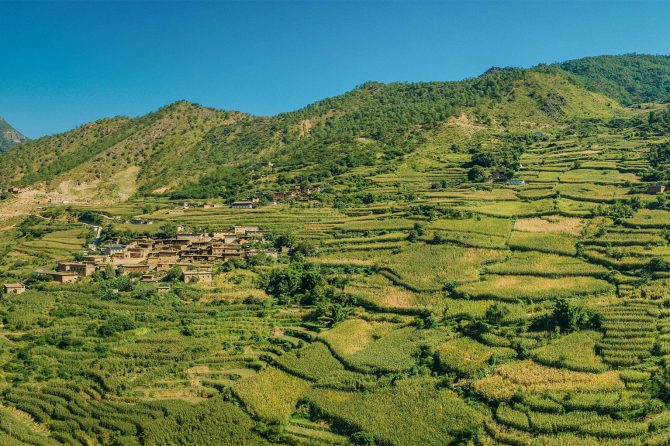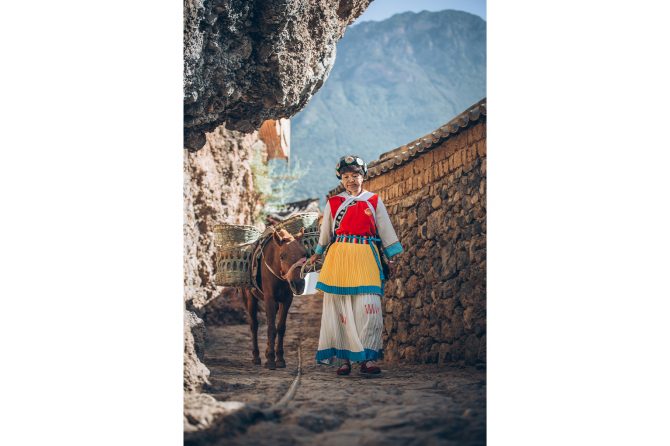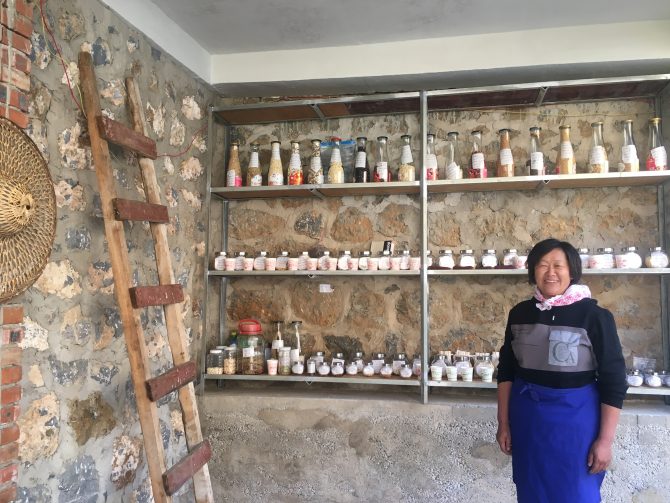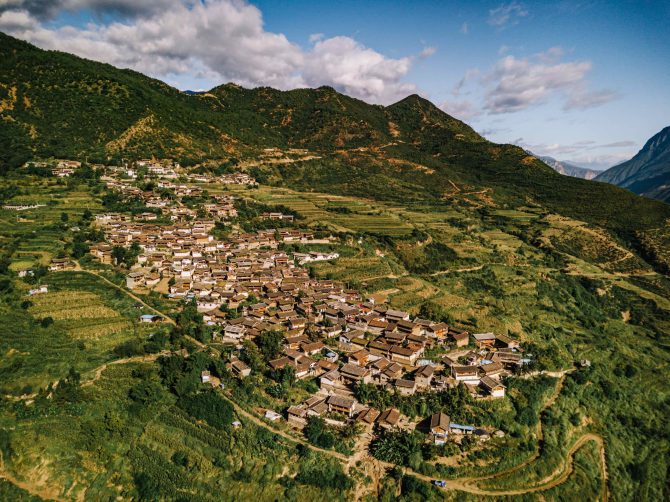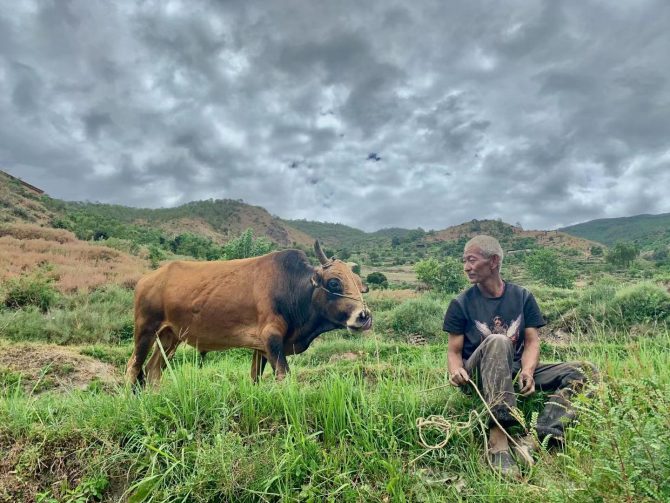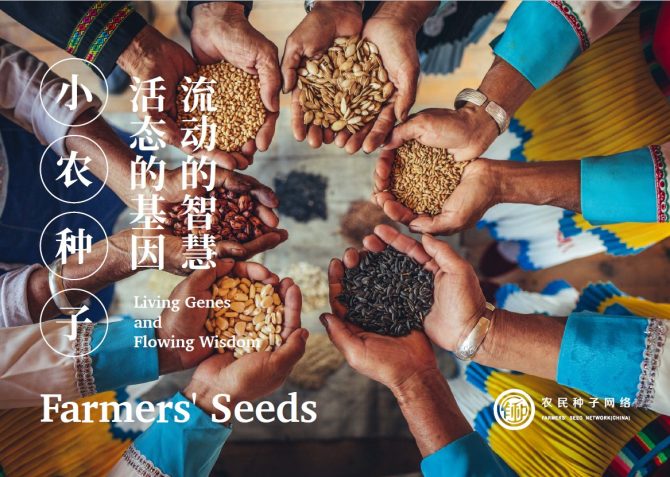2020 CHINA
Strengthening partnerships and scaling up living models of SEPLS use in community-based agrobiodiversity enhancement and livelihood security to adapt to changes and crisis
Chinese Academy of Science, Centre for Chinese Agricultural Policy (CCAP)
Partnership building
Landscape
Overview
The project was implemented in four Naxi (Moso) ethnic mountain villages in remote areas of the northwest Yunnan Province, which not only is located within a biodiversity hotspots but also has rich indigenous culture. However, the area is strongly affected by climate change and the resulting loss of biodiversity as well as the loss of traditional culture and knowledge. Most indigenous farming communities are poor and vulnerable, where most men have migrated for cash income and women are playing key roles in agricultural production and livelihoods under rapid socio-economic and environmental changes. However, the women’s crucial roles and bio-cultural knowledge are not sufficiently recognised by science and are not included in formal policies on biodiversity, climate change and poverty alleviation. Against this backdrop, CCAP started implementing SEPLS and bio-cultural heritage approaches to reinforcing agrobiodiversity and livelihood security in this region in 2013. The process helped communities to organise themselves, to develop a network among the four villages, and to share their best practices. On this basis, the project aimed to strengthen joint efforts for upscaling and further accumulating best practices, and to demonstrate these efforts at the 15th meeting of the Conference of Parties for the Convention on Biological Diversity (CBD-COP15).
The following activities have been implemented:
- Partnership enhancement for the co-development of best practices through farmer leaders’ meetings;
- Demonstration of best practices of bio-cultural heritage approaches and upscaling at CBD-COP15;
- Empowerment of indigenous community networks by inviting them to participate and give them a voice at COP-15 related meetings; and
- Community-based participatory dialogues to recognise bio-cultural heritage approaches on local, national and international scales
Key achievements
- A farmers’ seed system was developed in each of the four Naxi villages. The system encompasses a community seed bank as well as a scheme for seed selection, reservation, exchange and management of traditional crop varieties. The seed system demonstrated its multiple functions, e.g. its contribution to adapting to changes and crises, as well as the contribution of participatory plant breeding and variety selection process to crop improvement responding to the needs of farmers and consumers.
- Farmers became more organised and proactive in natural resource management. Their network and collective actions were strengthened, thereby protecting the environment and bio-cultural systems, as well as strengthening resilience and livelihood security.
- Knowledge and awareness about integrated farming increased among farmers, especially the youth. Furthermore, model farms were established which have been promoting integrated farming with mixed species within and beyond the project site.
- These results were presented to international conferences, e.g., the High-level Policy Forum and Dialogue on the Roles of Communities, Science and NGOs in Biodiversity Conservation and Utilization, and the Ecological Civilization Forum of CBD-COP15. The case was also reported as one of the “100+ Biodiversity Positive Practices and Actions Around the World Selected Highlights”
Lessons
- Community-led natural resource management actions based on indigenous knowledge and culture and with technical support by diverse external actors can facilitate collective community actions. A community seed bank is a very strong cohesive force for communities. It can be adaptive to changes and crises, and meet the farmers’ need in production and livelihood, while at the same time providing a space for public demonstration and information-sharing among farmers.
- The participation of diverse groups including government, researchers, NGOs and consumers have played an important role in supporting community voice and capacity building, promoting continuous collaboration on community programmes, and increasing policy influence.
Project location
Organisation

Chinese Academy of Science, Centre for Chinese Agricultural Policy (CCAP)
- Sector
- Research institute
- Country
- China
Related products
Living Genes and Flowing Wisdom
- Publisher
- Farmer's Seed Network (China)
This booklet shows photos from 15 traditional farming villages in six provinces in the North, South, East, and West of China, including Naxi
families along the Jinsha River, women farmers on the Qinghai Plateau, and the senior people and kids from the Karst mountains. You can see
the millennium old millet that originated in Northern China, and smell the fresh rice fragrance from Southern China. Through the photography’s
art expression of real-life beauty with the fragrance of earth, every vivid and clever image conveys farmers’ belief in seeds, reveals the true
meaning of life, and interprets the way of harmony of man and nature!
Relevant projects
Projects of the same year
Aichi Biodiversity Targets
Aichi Biodiversity Targets
-
Sustainable management of marine living resources
-
Sustainable agriculture, aquaculture and forestry
-
Extinction prevented
-
Genetic diversity maintained
-
Traditional knowledge respected and integrated
-
Knowledge improved, shared and applied
Sustainable Development Goals
Sustainable Development Goals
-
No poverty
-
Zero hunger
-
Climate action
-
Life on land
